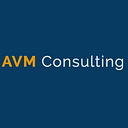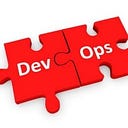Deploying Secure AWS Guard-Duty (Threat Intelligence) In AWS
Amazon GuardDuty gives users the ability to monitor one or multiple AWS accounts for unusual and unexpected behavior. This is accomplished by analyzing and monitoring existing logs, such as VPC Flow Logs, CloudTrail Event Logs, and DNS Logs.
This will show what AWS Guard-Duty can do for you and the use cases that it will provide. I will explain how to generate sample data to show what Guard-Duty can point out. I will explain the “lists” management on how to whitelist various IPs for secure communication in your environment. I will explain the pricing model and how to invite other Guard-Duty accounts and how to integrate that information into useful information.
Additionally, Amazon GuardDuty processes data from multiple sources, focusing on threat detection by searching for anomalies and known malicious IP addresses and URLs.
Amazon GuardDuty was specifically developed and optimized for the cloud. AWS Security, in partnership with industry-leading third-party security partners, has developed a constantly increasing database of possible vulnerabilities, along with the patterns that each one presents.
With that in mind, you can create a plethora of custom rules, along with your base of known malicious IPs. Amazon GuardDuty offers CloudWatch Events, CLI tools, and HTTPS APIs to assist you in creating your own custom automated functions to handle all alerted threats.
Findings
To help you to determine the action you want to take for each alert, GuardDuty provides three levels of severity which we will take a deeper look at in just a moment
- Low severity: indicates threats that have already been removed or blocked before compromising any resource.
- Medium severity: indicates suspicious activity, such as an increase in traffic specifically directed to, for example, bitcoin-related domains, indicating cryptocurrency mining.
- High severity: indicates a resource that is fully compromised and is constantly being used for unintended purposes.
Testing Results
Low Severity
For our first test, we wanted to keep things simple by invoking a low severity response from Amazon GuardDuty. To do this, we launched an EC2 instance with SSH port 22 open to the world, which is typically used to securely log in and transfer files. After setting up the vulnerable environment, we then probed that EC2 instance using a proxy server running ProxyChains on Kali Linux from an unusual source IP address.
In the image above, you will see that Amazon GuardDuty results immediately detected a low severity threat and provided a description of the event. In the description you will see information regarding which resources were affected, the actor IP address/location, how many times it occurred, along with the time and date of the detected threat.
Medium severity
In the example below, we made some API calls to our AWS account using Kali Linux, which is a distribution commonly used by attackers, pen testers, and security experts to identify weaknesses to gain unauthorized access to your environment.
As you can see, GuardDuty detected that an API call was invoked from a Kali Linux computer, indicating that your credentials might be compromised.
High severity
What if someone gained access to one of your instances to perform a malicious activity such as a brute force attack or port scan? In the example below, we used one of the EC2 instances in our account to perform an SSH brute force attack against one of our test servers.
This is considered a high severity issue as it means your instance is already compromised. There are several types of attacks that are constantly being updated by AWS and its security partners. You can find the complete list here.
How to add Lambda+ systems manager + cloud watch?
Cloudwatch logs determined
And you can see findings in the Guardduty Console :
Pricing
AWS provides a free full access 30 day trial of the service upon the first activation so you can see if it’s a good fit for you. To estimate the costs after that, Amazon GuardDuty generates an estimated price for how much you would have spent without the free trial.
The pricing is based on the amount of analysis of your AWS log data. VPC Flow Logs and DNS Logs will be charged per GB/month and the CloudTrail Event Logs will be charged per 1,000,000 events/month. Even though pricing can differ from region to region, in general, it consists of the following:
VPC Flow Log and DNS Log Analysis
To avoid unnecessary expenses, GuardDuty is constantly analyzing your infrastructure, knowing exactly the required amount of detection capacity for each specific moment. In other words, you only get charged for the capacity you use, when you use it.
Getting Started
Amazon GuardDuty can be enabled with just a few clicks in the AWS Management console. Once enabled, the service immediately starts analyzing billions of events from AWS CloudTrail, Amazon VPC Flow Logs, and DNS logs.
The service is very easy to enable within your account. Simply click “Enable GuardDuty” within the service dashboard in the AWS management console:
Once enabled, the service will immediately begin the analysis process. Any findings will be displayed on the dashboard, categorized by the appropriate severity level. The details about each finding give you valuable insight allowing you to dig deeper into the potential issue.
If you want to monitor additional resources, such as DNS and VPC Flow logs, you will need to create a VPC Flow Log for the desired resource, which can be from a specific network interface or the whole VPC, and configure Query Logging for your domain on Route53
👋 Join us today !!
️Follow us on LinkedIn, Twitter, Facebook, and Instagram
If this post was helpful, please click the clap 👏 button below a few times to show your support! ⬇

